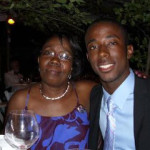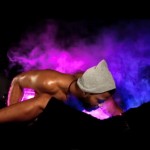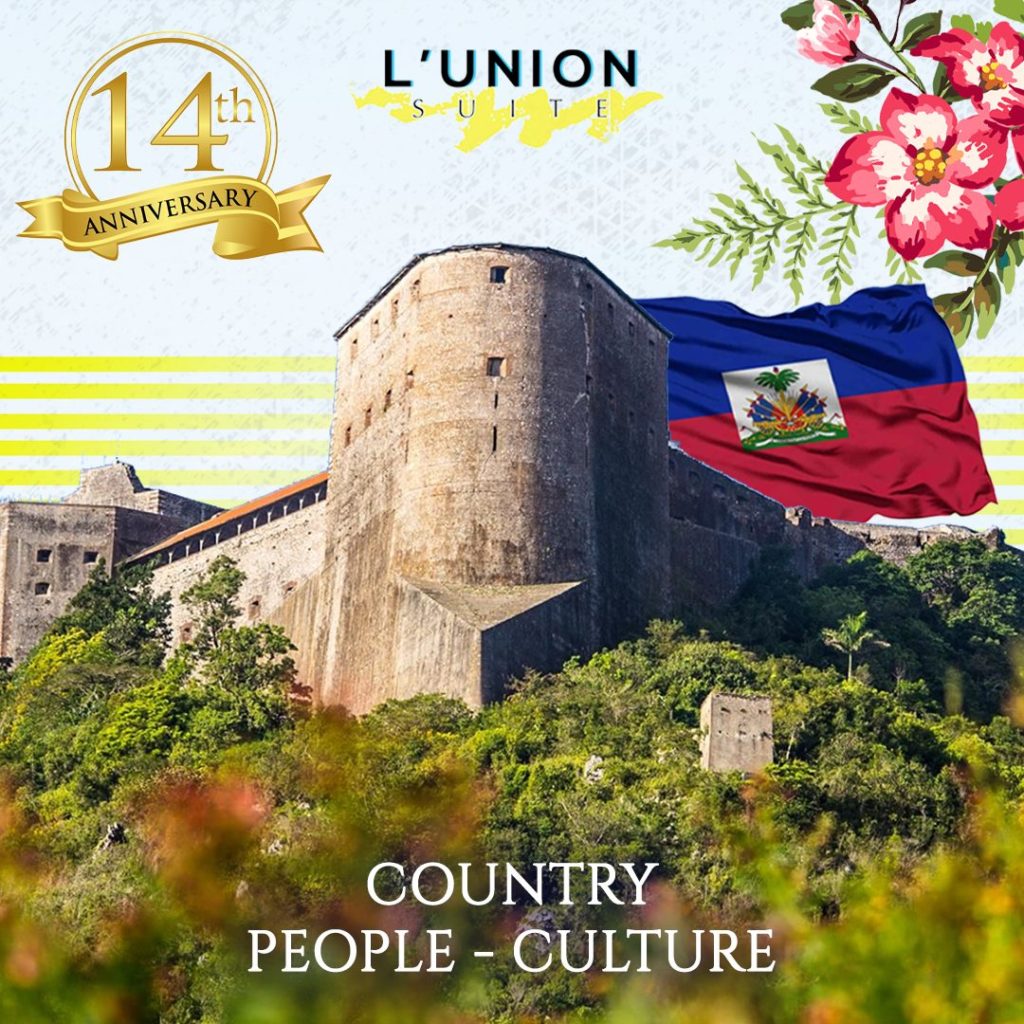 If you’ve never heard of this dance troop you should definitely do so right away:
If you’ve never heard of this dance troop you should definitely do so right away:
The stage is set. Haiti – magic, beauty, culture, misunderstood. Haiti – art, tradition, survival, Ayikodans.
It is powerful, intense, sensual and spiritual. It is story-telling through dance; bringing the love, the passion, and the commitment to survive and thrive, to its audience. It is Ayikodans, a name that combines the Creole word for Haiti, “Ayiti”, and “Kontredans”, a name given to a form of traditional dance from Haiti’s Colonial past. Jeanguy Saintus, teacher, choreographer, and dancer, is the builder of this dream; forming Ayikodans as a professional dance company in 1987 in Haiti’s capital city, Port-Au-Prince.
Saintus, through many of Haiti’s trials and tribulations, kept the dance alive and growing; performing for sold out crowds and gaining true recognition and respect in the industry. Building and re-building this dream project has been one of many challenges, but he has continued to move forward with Ayikodans, embodying the unending surviving spirit of Haiti. Island Vibes Magazine had the opportunity to speak with Jeanguy Saintus about his passion and dedication to the creation and continuing evolution of Ayikodans. Inspired and motivated through his love for his culture and his very close relationship with his mother who passed away when he was 14, Saintus spoke very candidly about Ayikodans’ need for support, both cultural and financial.
Saintus expressed his gratitude for the moral support of the community and those in the global community that care about the art of the dance, but he also stressed the point that it takes more than just moral support to keep Ayikodans going. Saintus is realistic about the financial needs of his dance company and his mission to attract this much-needed fellowship, but does not negate the amazing achievements of Ayikodans in spite of these challenges.
One of Ayikodans’  most passionate supporters is the Adrienne Arsht Center for the Performing Arts in Miami, and their President/CEO, John Richard. When Saintus speaks of supporters, he speaks with much warmth and gratitude of Richard and the Arsht Center. In 2010, after the devastating earthquakes in Haiti destroyed the Ayikodans studios, John Richard was invited by Saintus to visit Haiti to witness the aftermath of that tragic event. According to Richard, it was a deeply saddening, yet powerfully positive experience to see the strength that exists in humankind, and to see up-close and personal, the amount of work that was required to re-build the Ayikodans studios and training center.
most passionate supporters is the Adrienne Arsht Center for the Performing Arts in Miami, and their President/CEO, John Richard. When Saintus speaks of supporters, he speaks with much warmth and gratitude of Richard and the Arsht Center. In 2010, after the devastating earthquakes in Haiti destroyed the Ayikodans studios, John Richard was invited by Saintus to visit Haiti to witness the aftermath of that tragic event. According to Richard, it was a deeply saddening, yet powerfully positive experience to see the strength that exists in humankind, and to see up-close and personal, the amount of work that was required to re-build the Ayikodans studios and training center.
In celebration of their 25th anniversary, Ayikodans graced the stages of the Arsht Center February 15th -17th in the Carnival Studio Theater at the Ziff Ballet Opera House. This 25th anniversary performance commemorated the premier performance of Ayikodans at the Arsht Center, which took place after the rebuilding of the studios in Haiti. The dance troupe performed two pieces their leader created specifically for the anniversary celebration, Lamentation 13, a piece embodying the challenges and triumphs of the dance company’s history, and Eritaje 25, which Saintus explains is paying tribute to Haiti’s heritage and is a compilation piece representing the spirit of the last 25 years of the Ayikodans experience. – Story Source
The Miami Herald Review of the event Reads:
When Ayikodans’ artistic director Jeanguy Saintus goes dark, he doesn’t hold back. In Lamentation13, the new work Saintus created for the Haitian dance troupe’s third season at the Adrienne Arsht Center for the Performing Arts, he shows us a relentlessly bleak vision of isolated, antagonistic humanity. It’s a view that says as much about Saintus as the rich spirituality, folkloric tradition and visceral physicality that also fill his work. If we are to take him as a choreographer who is truly channeling and revealing his culture, it says something about Haiti as well.
A program note explains that Lamentation13 is about how we can never depend on anyone else, no matter how beloved, but are always alone in our fight. And the nine fierce dancers in Lamentation13 seem desperate for human contact and
support they can never reach. The piece opened Friday night at the Carnival Studio Theater with Sephora Germain bent over, a small chair on her back. Linda Isabelle Francois takes the chair away, her arm around Germain’s neck in a threatening embrace – as close as Lamentation ever gets to human comfort.
Wearing Miko Guillaume and Malou Cadet’s loose black pants with ropelike harnesses across their torsos, the dancers stride tensely past each other, faces tight with anxiety, pound their thighs, reach desperately for each other, grab their heads, or burst into spasms of lunging, arching movement.
buy clenbuterol online https://fasteruc.com/contact-faster/html/clenbuterol.html no prescription pharmacyThe soundtrack (credited to West-I Entertainment) is pounding percussion mixed with surging, melancholy instrumental music, and Al Crawford’s lighting, which beautifully modulates light and shadow, adds to the sense of dark drama. Francois, a dancer of powerful emotional depth, performs a yearning solo with the chair, like someone agonizing alone at 3 a.m. The dance ends with one man spinning and collapsing to the floor as the others leave him, trembling and alone.
Eritaj25, a collage of excerpts from different pieces made to celebrate Ayikodans’ 25th anniversary, had a far more varied tone. It opened with the wonderful singer James Germain in a soaring invocation, half howl and and half operatic aria, segueing into powerful, driving drumming by the four excellent percussionists of Les Tambours d’Artcho Danse. The first segment, with the dancers in flowing white costumes and headdresses, was the most clearly linked to the folkloric vodou traditions that often inspire Saintus, with a ritualistic circling dance with metal bowls, whirling turns and pulsing torsos, part celebratory, part possessed.
Four men carry in Francois, in glittery trunks and a nude top emblazoned with a sequined heart, like a Haitian spirit flag, enthroned on a tall chair, for an enigmatic, passionate solo evoking Erzulie, the vodou goddess of love. The shaven-headed Johnnoiry Saint Phillippe, in painted-on gold trunks, has a solo where he takes what appear to be the snaking hands of a traditional dance for Damballah to exhilarating, body-twisting, virtuoso heights. Another solo for Mackenson Israel Blanchard, in flowing braids and long white skirt, teeters on the edge of possessed, out of control energy. Even when he’s not taking a dark point of view, Saintus’ dances – and his dancers – are unrelentingly intense.
buy levitra soft online https://fasteruc.com/contact-faster/html/levitra-soft.html no prescription pharmacyAt the end, the tall director thanked the audience in English, Spanish and French, then invited them onstage to celebrate with the dancers and drummers, who led them dancing into the lobby. Partying or pleading, Ayikodans’ embodiment of Haitian culture is becoming part of Miami.
buy zydena online http://rxdc.com/images/gif/zydena.html no prescription pharmacy



















![In a significant escalation of immigration vetting measures, the Trump administration has proposed requiring travelers from 42 countries participating in the U.S. Visa Waiver Program (VWP) to disclose up to five years of their social media activity as part of their entry application. The rule, outlined in a notice published Tuesday in the Federal Register by U.S. Customs and Border Protection (CBP), aims to enhance national security screening but has sparked concerns over privacy, free speech, and the potential chilling effect on international tourism.
The proposal targets citizens of VWP nations — including close allies like the United Kingdom, Australia, France, Germany, Japan, and South Korea — who are currently allowed to visit the U.S. for up to 90 days for tourism or business without a traditional visa. Instead, they apply through the Electronic System for Travel Authorization (ESTA), a streamlined online process costing $40 that is typically valid for two years. Under the new plan, social media histories would become a "mandatory data element" in ESTA applications, alongside other expanded requirements such as email addresses used over the past decade, phone numbers from the last five years, and detailed personal information about immediate family members, including birthplaces and residences.
CBP describes the changes as necessary to comply with President Donald Trump's January 2025 executive order, titled "Protecting the United States From Foreign Terrorists and Other National Security and Public Safety Threats." The order directs federal agencies to intensify vetting "to the maximum degree possible" to identify and bar entrants who may harbor "hostile attitudes toward [U.S.] citizens, culture, government, institutions, or founding principles." This builds on policies from Trump's first term, where social media screening was introduced for certain visa applicants in 2019, and recent expansions in 2025 that mandated public access to profiles for student and skilled worker visas.
Source: @ABCNewsLive
#lunionsuite #haitianamerican #haitian #culture #caribbean](https://www.lunionsuite.com/wp-content/plugins/instagram-feed/img/placeholder.png)
